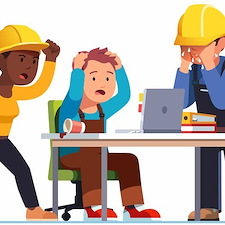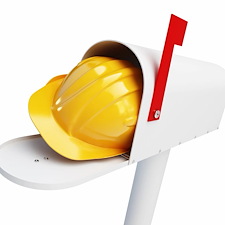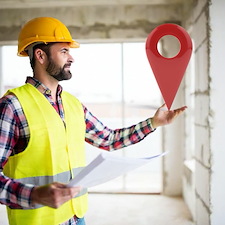What's in a Name: Personalizing Customer Interactions


"Dear Customer,
We value you as a customer and would to extend a personal thank you for signing up for our services."
Do you really value me as a customer? If so, you'd think you'd know my name!
I received an email similar to this a while ago signing up for new Internet services, and was discouraged by the lack of personalization. This message wasn't meant to be a widely dispersed email like a newsletter or service announcement. It was meant to be a personal welcome, but it clearly failed at engaging me personally.
Of course, I know that the email was an automated response, triggered by an auto responder rule as sent by a heartless, metal machine. But in the era of Big Data, it seems like a simple task to humanize such a cold exchange. Emails aren't the only place where we're lacking a personal touch. All of our communication could stand a little more personalization.
Define the Relationship With a Name
When we're talking to friends and family, we use comfortable language and friendly banter without thinking about it. In some instances, once you've already developed a professional relationship with a customer, it may be time to evolve your relationship to become more friendly. Using first names is a great segue, you can feel out a customer's comfort level and see if they're open to more friendly chat. Move away from shop talk and move toward small talk.
If you think you're not personable enough to strike up a conversation, then simply using the name in the course of on-location work is a great start.
Take Note! Your Mileage May Vary. Especially in specific regions or age segments of your clientele, using proper titles and appropriate naming conventions is necessary.
Personalized Follow Up Thank You Cards
Remembering details about a specific call or project demonstrates a vested interest in your clients and your work. Write a thank you card with a personalized message. Take the opportunity to use your customer's name, make specific mention of a subject or topic you discussed, and remind the client what your name is and how you can be reached. Whenever possible, write the thank you card on the same day of the service, so that your customer interaction is fresh in your mind. Put the thank you card in the mail within 3 days to make sure your thanks is timely. A simple thank you card doesn't take long to fill out. For example:
"Hello Dan,
Thanks for the opportunity to complete your furnace tune-up. I appreciate you supporting our local business. I know we talked about the possibility of adding a humidifier to your home. So if you have any more questions about that or anything to do with your home comfort system, you can call me at 555-555-5555, and tell them that you worked with me – Chris."
Personalized Thank You Phone Calls
If you feel like you don't have the time (through you should always have time to thank your customers) or resources for thank you letters, or too high a workload to stay on top of a thank you card routine, then follow up with a phone call. At the very least, jot down client names, phone numbers, and some positive notes about each client interaction, so that you can call your customer within a few days to make sure they are happy with your service.
Leave a message at the beep! Clients may be screening their phone calls, so it's perfectly acceptable to leave your personalized thank you in a voicemail. Just don't forget to give them a call back number.
Your Email Communication
Your individual emails should definitely address your customer by name somewhere within the body of your message. Even a simple, "Thank you, Dan, for your business" is preferable to a generic "Thank you for choosing Our Company". Emails meant for larger groups, such as newsletters, don't necessarily have to be personalized, as they are clearly meant for a group of people instead of being individually written for one single recipient.
Take Note! While adding a name within the body of the email is great, adding the name in the Subject section of your email can be seen as spammy, and we don't recommend it.
When Asking for Reviews
Highly personalized finished project and customer service is what separates your business from the competition – so when you ask for the review, you should customize that, too! Any form of follow up communication should take advantage of your previously established rapport. Using your customer's name in the emails and phone calls to follow up on the success of a job or service is a "tag back" to the initial conversation
When Presenting Options For Your Client
Personalized service is more than just using a customer's name over and over again or remembering the name of the family dog. It's about interacting authentically with your customer. Sometimes, that means taking the time to truly listen to a customer's request. When replying in conversation, your proposed improvements should mark out multiple points of their conversation with you – just as you would counter and overcome objections.
Other times, it is simply allowing for your client to work directly with you in the manner that they prefer – not the one that you prefer. While you may hate email, your customer may prefer to work out the details through their inbox instead of over the phone.
Why Personalize Anyways?
In the end, personalized client interaction makes your customer feel more valued, and what customer doesn't like that? The more positive exchanges you have with your clients, the more likely they are to remember your organization. The stronger connection you can build with clients, the more likely they are to enjoy your interactions and think more highly of you, your company, and your services.

About Chris Lonergan
Chris Lonergan has over 12 years of contractor marketing experience with Footbridge Media. With a background in web design, print design, content creation, and online marketing, Chris is focused on providing quality marketing and business solutions in the construction and service industries - helping small business owners to more efficiently manage their companies and grow their operations.
Chris Lonergan has previously contributed to and/or been featured in PM Magazine (Plumbing & Mechanical | Contractors x Engineers), theNEWS (ACHR - Air Conditioning | Heating | Refrigeration), Service Roundtable's blog, inPAINT Magazine, the SMB Marketing Agency Show, and the Green Industry Podcast. Chris is also a past SGI/CertainPath breakout session presenter.





